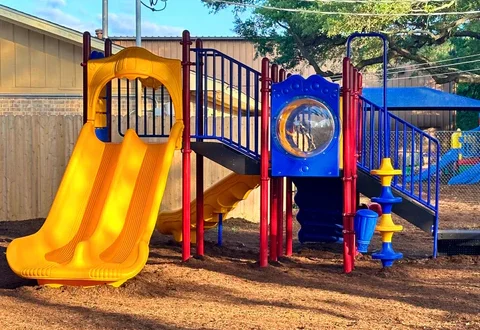Introduction: What is Emotional intelligence?
Emotional Intelligence (EI) is a term used to describe the ability to manage and express emotions, as well as to recognize, understand and respond to others’ emotions. Emotional intelligence is the basis for healthy relationships, empathy and communication in children.
Early emotional intelligence development is not just about improving behavior, but also laying the foundation for mental health and social success throughout life.
1. Why emotional intelligence is important in child care
Children have big emotions and little experience. Children cry when they are hungry, have tantrums when angry, and laugh when surprised. Over time, with guidance, children learn to control their emotions and communicate thoughtfully with other people.
High emotional intelligence has many benefits:
-
Improved focus and self-control
-
Strengthening friendships and collaboration
-
Reduced behavioral problems
-
Empathy and compassion
-
Academic performance and improved school readiness
“IQ can get you through the school years, but EQ will help you in life.”
2. Early Childhood Development of Emotional Intelligence
The emotional development of a child begins at birth. They look up to their caregivers for understanding of how the world functions, and also how emotions function.
Key Milestones
-
0-12 month: Babys express their needs by crying. They begin to recognize facial expressions.
-
1 – 2 years: Toddlers express strong emotions and name basic feelings (e.g. “happy”, “sad”).
-
Age 3-4: begins to understand the simple causes of emotions and recognize them in others.
-
5+ year: Can show empathy and describe emotions.
Every stage builds upon the previous — and child-care environments play an important role.
3. How High-Quality Childcare Can Support Emotional Development
Children feel more secure and heard when they are in child care homes and centers that provide emotional support.
Find Environments that:
-
Caregiving that is warm and responsive
-
Encourage children to express their emotions
-
Model calm problem-solving
-
Create quiet spaces or areas for emotional regulation.
-
Supporting all children without labeling any as “bad”
Teachers and caregivers can benefit from the following practices:
-
You look upset. “Are you frustrated?”
-
Validating feelings: It’s okay to be mad. Let’s talk.
-
Teaching solutions: If we take turns, then everyone has a chance.
-
Modeling control: Adults stay calm even during meltdowns
4. Teach children to express their emotions and identify them
Children must first recognize their emotions before they can learn to manage them.
Simple Techniques:
-
Feelings Charts Use images of faces that show happy, sad or angry.
-
Emotion Dolls or Puppets : Role-playing situations and problem solving
-
Storybooks : Read books with a focus on emotions. ( Color Monster and When Sophie gets angry).
-
Emotion mirrors: Have children mimic their feelings in the mirror to develop recognition.
Encourage your child to use words rather than actions to express their feelings (such as hitting or crying).
5. Helping Children Manage Big Feelings
Self-regulation requires time and practice. Parents and caregivers can assist.
Teaching Techniques:
-
Deep breathing:
-
Counting. Count 5 or 10 when angry.
-
Quiet Corner : A safe, cozy space with books, pillows, and calming tools
-
Movement : Jumping, stretching or dancing to release energy
-
Naming it: Saying “I feel angry” can reduce an emotion’s strength
Teach children how to deal with emotions, not punish them.
6. Building Social Skills and Empathy
Empathy is at the core of emotional intelligence. Empathy allows children to build relationships and care for others.
How to foster empathy:
-
Show kindness (“Let’s clean up Sam’s toys”)
-
Discuss other people’s emotions (“How did Maya feel when this happened?”).
-
Encourage sharing and turning.
-
Praise good deeds: “That was thoughtful of you to give her a chance.”
-
Celebrate diversity by reading books, toys and stories with different perspectives
7. Use of Play to Teach Social Intelligence
Play is a great way to learn about feelings and relationships.
Emotional Play Ideas
-
Role-play using dolls, animals, or action figures
-
Create stories with puppets about feelings
-
“Emotion Charades” Guess feelings by using facial expressions or body language
-
games like “Feelings Bingo” or “How would you feel if …?” scenarios?
Allow children to explore their emotions in a safe and supported environment.
8. Partnership with Parents for Emotional Development
Together, parents and child care providers must support the emotional development of children.
Tips for collaboration:
-
Share information with your child about their moods, triggers and progress
-
Give suggestions on how to handle tantrums and separation anxiety
-
Keep routines consistent between care and home
-
Please recommend books or other resources on emotions
-
Regular check-ins and parent-teacher conferences
Consistency is the key to security. Secure kids are better able to handle their emotions.
The Early Years Are Critical to Raising Emotionally Intelligent Kids
Emotional intelligence can be just as valuable as learning how to read or count. Children who learn to express and manage their feelings, as well as understand others’ emotions, become more resilient, confident and kind.





